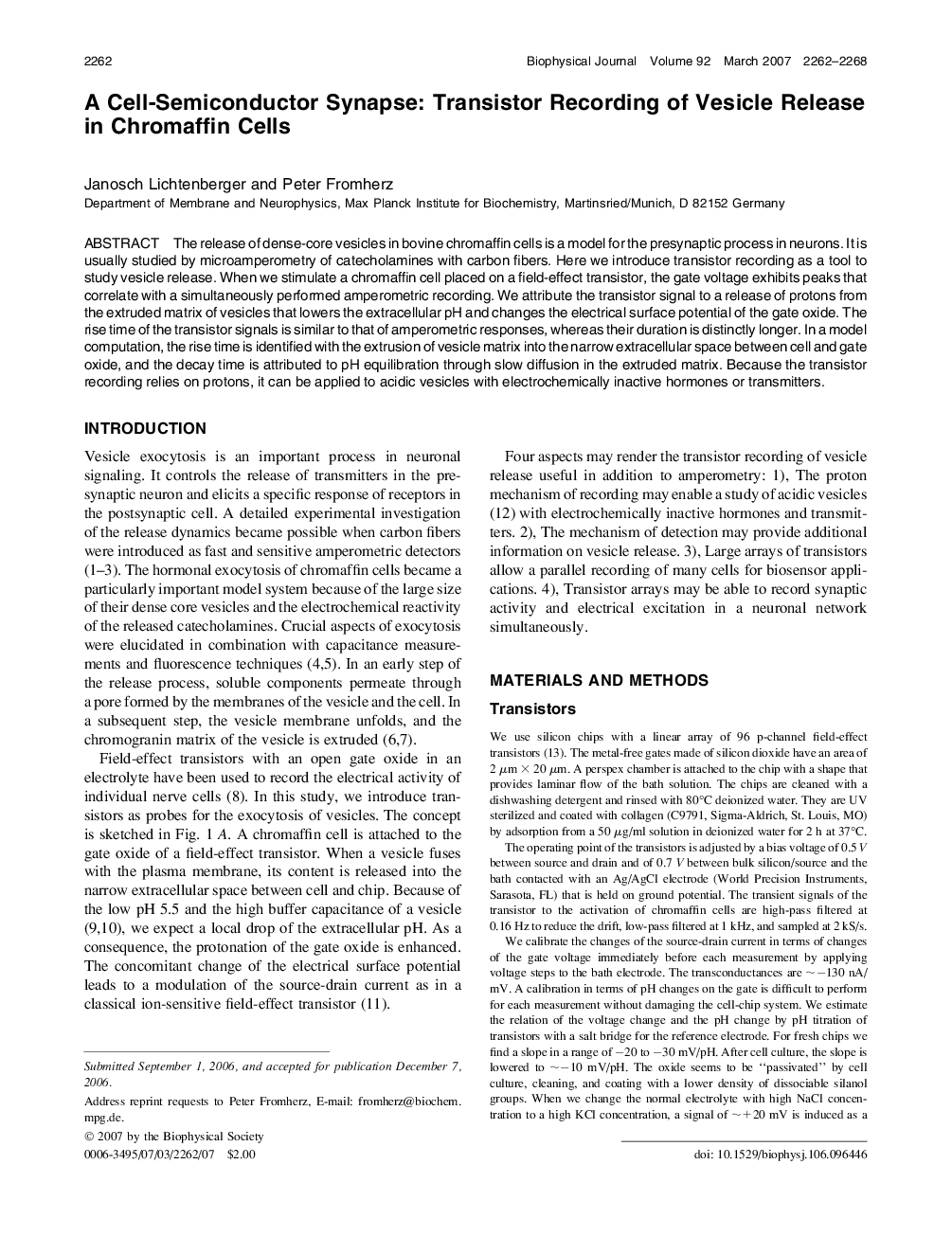| Article ID | Journal | Published Year | Pages | File Type |
|---|---|---|---|---|
| 1958315 | Biophysical Journal | 2007 | 7 Pages |
The release of dense-core vesicles in bovine chromaffin cells is a model for the presynaptic process in neurons. It is usually studied by microamperometry of catecholamines with carbon fibers. Here we introduce transistor recording as a tool to study vesicle release. When we stimulate a chromaffin cell placed on a field-effect transistor, the gate voltage exhibits peaks that correlate with a simultaneously performed amperometric recording. We attribute the transistor signal to a release of protons from the extruded matrix of vesicles that lowers the extracellular pH and changes the electrical surface potential of the gate oxide. The rise time of the transistor signals is similar to that of amperometric responses, whereas their duration is distinctly longer. In a model computation, the rise time is identified with the extrusion of vesicle matrix into the narrow extracellular space between cell and gate oxide, and the decay time is attributed to pH equilibration through slow diffusion in the extruded matrix. Because the transistor recording relies on protons, it can be applied to acidic vesicles with electrochemically inactive hormones or transmitters.
